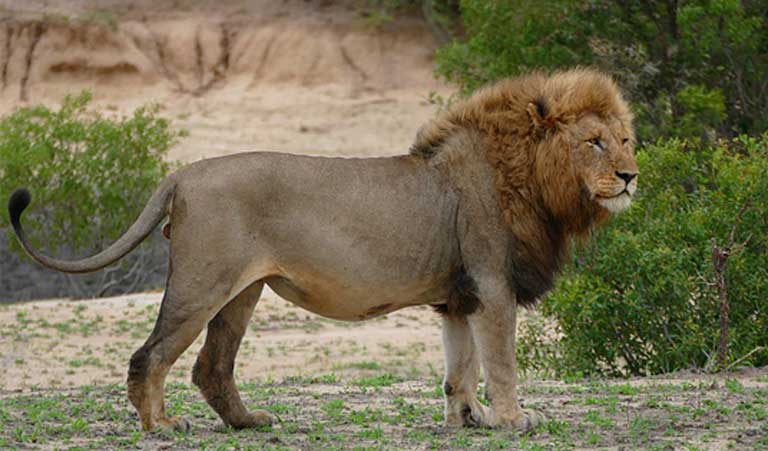- On November 15, the U.S. Fish and Wildlife Service lifted a ban on the U.S. import of elephant trophies from Zimbabwe and Zambia. The president put a hold on the order two days later, calling trophy hunting in a tweet a “horror show.” He has yet to make a final determination regarding the USFWS order.
- At the same time, Interior Department Secretary Ryan Zinke announced the establishment of the International Wildlife Conservation Council. One goal of the body will be to promote with the U.S. public the “economic benefits that result from U.S. citizens traveling abroad to [trophy] hunt.”
- While trophy hunting does provide revenue for land and wildlife conservation in some special cases in Africa, the new U.S. council will likely have its work cut out for it, since many Americans no longer see trophy hunting of endangered species as ethical.
- Conservationists counter pro-trophy hunting advocates by noting that rampant government corruption in nations like Zimbabwe and Zambia make it unlikely that most trophy hunting revenues ever reach the African preserves, local communities or rangers that need the funding.
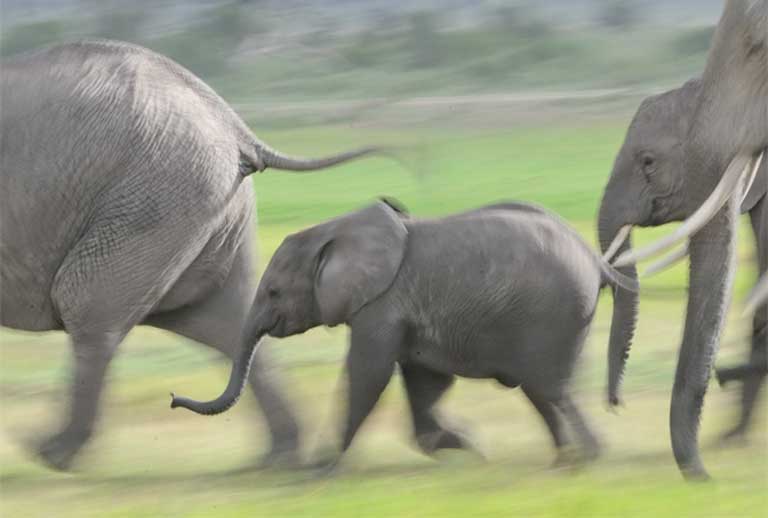
On November 15, the Trump Administration announced it was lifting the Obama-era ban on importing elephant trophies to the U.S. from Zimbabwe and Zambia. Reaction was negative, swift and brutal, coming from media outlets, animal welfare advocates and some, though not all, conservationists. Two days later, Trump himself intervened via Twitter, putting the decision on hold with a promise of later action.
Trump’s very public reversal – or potential one – left animal rights advocates, conservationists, big game hunters and safari businesses renewing heated attacks on, and vehement defenses of, trophy hunting to a degree not seen since the killing of Cecil the lion in 2015.
“Legal, well-regulated sport hunting as part of a sound management program can benefit certain species by providing incentives to local communities to conserve those species and by putting much-needed revenue back into conservation,” the U.S. government said in a statement justifying the policy announcement. Essentially the U.S. Fish and Wildlife Service (USFWS) had decided that elephant trophy hunting in Zimbabwe and Zambia “will enhance the survival of the species in the wild.”
But that argument clearly didn’t convince the President.
Trump tweeted that the Interior Department “will be very hard pressed to change my mind that this horror show in any way helps conservation of Elephants or any other animal.”
But even before the U.S. elephant decision was announced in November, the USFWS had quietly rolled back protections for lions, also in Zimbabwe and Zambia, in October. Before this lion trophies could only be imported from South Africa and elephant trophies from South Africa and Namibia.

“It is not clear on what basis the USFWS has decided that hunting of lions in these countries is beneficial to their conservation,” said Luke Hunter, a lion expert with Panthera. “I think that’s very difficult to demonstrate, and I would like to see the scientific data that shows it to be the case.”
The green lighting of elephant trophy imports (also backed by little accompanying data), followed by Trump’s sudden U-turn has left both conservationists and trophy hunters scratching their heads.
“Trump’s abrupt backpedaling after public outcry, while appreciated, shows how arbitrary this deplorable decision was,” Tanya Sanerib, an attorney with the Center for Biological Diversity, said in a statement.
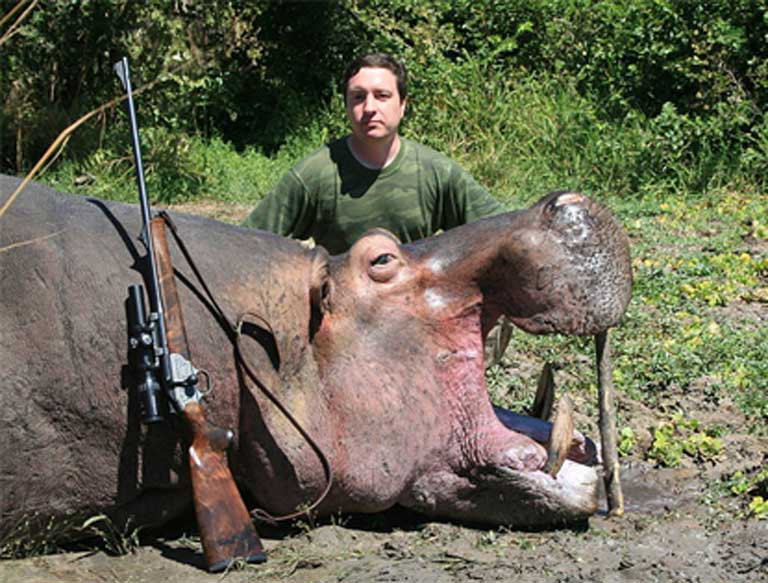
Money and land
The U.S. Interior Department, in its justification of trophy hunting, does not appear to have concerned itself with ethics – i.e. whether it is right for U.S. citizens to shoot African elephants (Loxodonta africana) and lions (Panthera leo), and then import and display their remains.
The reality as argued by the policy’s supporters is quite prosaic: it’s really about money and land.
“The income generated from hunting elephant… plays a key role in providing incentives to maintain wild areas, and to partly meet the management costs of these areas,” explained a spokesperson for the International Council for Game and Wildlife Conservation (CIC), an international not-for-profit group that promotes “sustainable use” of wildlife. “Removing this ‘tool’ exposes these areas to land use change and increased illegal hunting.”
The CIC points to Savé Valley Conservancy in Zimbabwe as an example, a mosaic of land owned by government, private individuals and communities. According to the CIC, trophy hunters are allowed to kill seven elephants per year there out of a population of about 2,200 animals. In all, they say, this brings in nearly half a million dollars annually – roughly the amount spent on rhino protection in Savé Valley, which covers 348,525 hectares (1,346 square miles).
“Take the elephants hunts away and our rhino protection collapses due to lack of funding, leaving our land open to massive rhino and elephant poaching,“ the CIC asserts. Savé Valley is in remote southwest Zimbabwe, a place rarely visited by camera-toting tourists, but routinely visited by wealthy, rifle-toting tourists.
The trophy hunting groups’ bottom line economic argument: take away the revenue that comes from the sport and vast areas of remote, hard-to-access habitat will be lost to wildlife.

U.S. sending a mixed message
Trophy hunting “conservancies demonstrate that big game hunting can have a positive impact on conservation, if well managed and tightly regulated,” agreed Niall McCann, the Director of Conservation at National Park Rescue, a group that has worked on-the-ground in a number of African countries including Zimbabwe.
But, cautioned McCann, Savé Valley Conservancy is an exception to the rule.
Overall, the benefits of trophy hunting to wildlife conservation have been “greatly overstated,” according to McCann. His evidence: trophy hunting revenue provides less than two percent of wildlife tourism revenue in Africa and less than one percent of tourism jobs.
He is convinced that if trophy hunting for elephants in Zambia and Zimbabwe is opened up, the U.S. will be sending a “mixed signal” on its willingness to combat the ivory trade, which is decimating elephants across the continent. According to the great elephant census, the savanna elephant population has dropped by 30 percent in just seven years. But the forest elephant population has probably been hit even harder with one study finding that forest elephants – believed by many to be a distinct species – fell by 60 percent between 2002 and 2011.
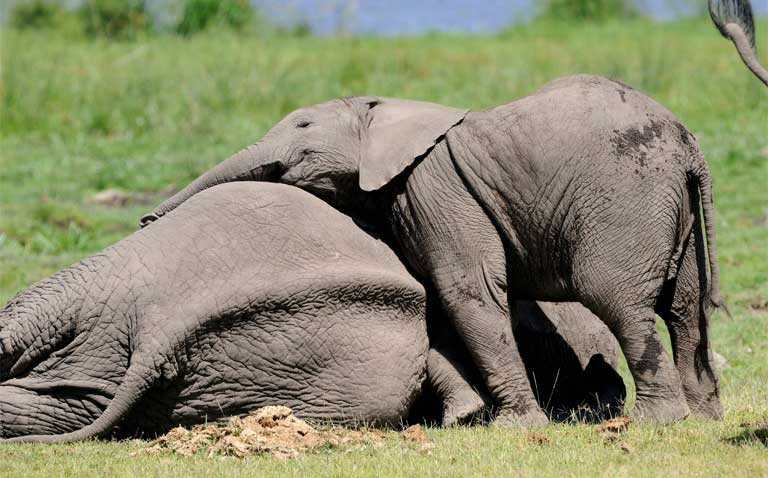
Inside Zimbabwe and Zambia
The USFWS decisions on elephants and lions involve two countries: Zimbabwe and Zambia. And that ruling seems to rely heavily on a U.S. government assumption that both nations have the needed resources, and can be trusted, to channel trophy hunting revenues, directly into conservation.
But such an assumption seems especially baffling in regard to Zimbabwe, considering that the U.S. decision came in the midst of a bloodless coup ending the 37 year reign of Robert Mugabe, seriously clouding the country’s political and regulatory future.
Local conservationists are particularly dubious. One conservationist working in Zimbabwe, speaking on the condition of anonymity, told Mongabay that the country is in a “frenzy of elephant exploitation.”
“Communities can kill or sell a quota of elephants haplessly wandering through their areas; the government is tearing baby elephants away from their families for shipping to Chinese Zoos; national park wardens are given quotas to shoot elephants as rations to feed the very men charged with protecting them… ivory is openly sold in the shops; people have poisoned over 120 with cyanide oranges; professional tourism guides are shooting elephants as part of their examination; and on top of all this, there’s the out-of-control poaching,” the source said.
The confidential source added that the current annual trophy hunting quota for wild elephants, set at 500 animals, is based on “wildly exaggerated and migratory census data” – meaning that Zimbabwe is counting elephants that are only passing through portions of the country for short periods.
The CIC says that all hunting should be considered illegal during the political transition, but they expect stability to return soon – along with legal hunting.
In neighboring Zambia, the CIC claims that the country’s hunting sector is “comparatively well managed and the government is stable.” But another source, who asked to remain anonymous, countered that claim and confirmed to Mongabay that corruption is rife in the Zambian Department of National Parks and Wildlife.
The 2016 Great Elephant Census found that Zimbabwe’s elephant populations were declining overall, down six percent to 82,304 individuals from 2007 to 2014. The population in the Sebungwe region in northwest Zimbabwe was hit particularly hard, plunging 74 percent during the same time period. Less than 4,000 elephants survive there today.
While Zambia’s elephant populations are relatively stable nationwide, wildlife in parts of the country has been decimated by poaching. The 2016 census warned that savannah elephants may soon become locally extinct in Sioma Ngwezi National Park due to an orgy of poaching; the populations in the Lower Zambezi also reportedly declined.
“Money is always more valuable than wildlife here, so the governments of Zimbabwe and Zambia cannot be said to exercise good governance of trophy hunting,” said an anonymous source.
That source noted that African governments, like those in Zimbabwe and Zambia, routinely exaggerate animal census data, while overstating the numbers of so-called “problem animals” to allow more hunting. According to this source, officials will do anything to make quick money, and hunters are happy to oblige – so long as they can kill their target quarry.
These in-country accusations, if valid, seriously undermine the logic of the USFWS decision. Clearly, money raised from trophy hunting can’t help local communities or conservation efforts, if the cash never reaches them or if animal numbers are inflated in order to allow unsustainable killing.

Losing the license to kill?
On the same day the elephant announcement dropped, U.S. Secretary of Interior Ryan Zinke (reportedly very close to the trophy hunting community) unveiled the establishment of the International Wildlife Conservation Council. Among the new council’s goals, it will: “Recommend removal of barriers to the importation into the United States of legally hunted wildlife,” while also “Develop[ing] a plan for public engagement and education on the benefits of international hunting,” including the “economic benefits that result from U.S. citizens traveling abroad to hunt.”
The CIC welcomed Zinke’s new council, but others met its creation with suspicion, questioning the need for such a body, and wondering whether it is appropriate for the U.S. government to actively promote trophy hunting.
“If [the council] is based on facts and realities on the ground, if differentiating between geographical regions, if keeping free of emotive influence of any kind, then this could boost trophy hunting as well as wildlife protection as the same time,” said the CIC. But that’s a notable number of big “ifs” regarding implementation, especially considering the Trump administration’s track record on anti-environmental executive orders and action.
The creation of the council could, some experts feel, be a last ditch effort by U.S. trophy hunters to legitimize and insure the continued legality of an international sport practiced by a wealthy elite but increasingly seen as unethical by the American public.
Possibly, in the midst of losing the “emotive” public argument, they are left only with the economic claim that trophy hunting revenues do, in some cases, support conservation, and sometimes go to local communities. Critics warn, however, that trophy hunters vastly overstate how much good their industry is doing, and understate how much African government corruption has undermined those benefits.
All the while, the public view that trophy hunting should be framed not just as an economic issue, but as a moral one as well, has gained ascendance – as it also has with many respected conservationists.
“Making money by slaughtering endangered wildlife for entertainment is a Victorian concept which – following a hundred years of discovery about the natural world – the majority of educated people are no longer willing to tolerate,“ Mark Hiley, a conservationist and director of National Park Rescue, said.
Jane Goodall, no stranger to Africa and arguably the world’s most famous conservationist, denounced as “rubbish” the assertion that trophy hunting actually funds conservation in a recent interview on Mongabay’s podcast.
Carl Safina, conservationist and author of Beyond Words: What Animals Think and Feel, says killing elephants “strikes me as something akin to murder” given all we know today about the intelligence and rich emotional and social lives of elephants.
In the face of escalating public attacks over recent decades, trophy hunters have become increasingly denigrating in their own self-defense. Safari Club International, for example, blamed Trump’s turnaround not on the president himself, but on “hysterical” and “shrill” anti-hunters.
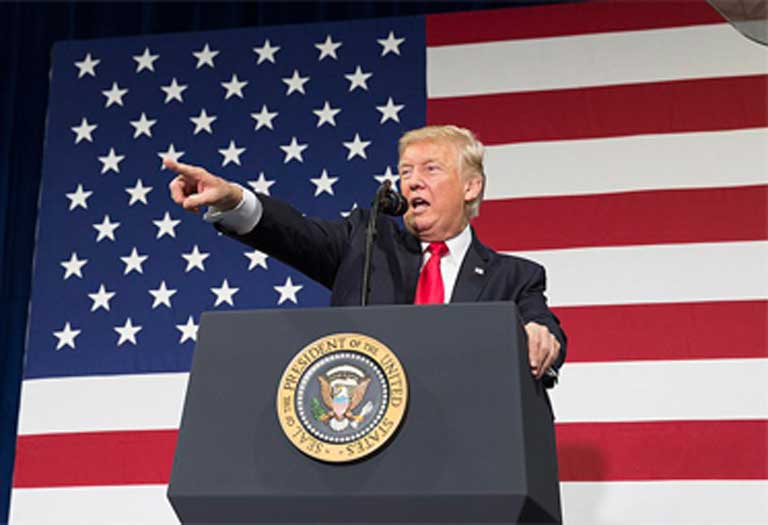
A shifting ethical playing field
There may be another, often ignored reason why the U.S. no longer allows the import of trophy hunted animals including gorillas, chimpanzees and bonobos, and it’s not because they’re endangered (there are far more Western lowland gorillas than black rhinos, which a U.S. citizen was allowed to kill in 2015 for a bid of $35,000). Great ape hunting prohibitions most likely stem from the fact that science has informed humankind so that these species are now widely viewed as not just intelligent, but sentient. After decades of research, scientists understand that great apes – so closely related to ourselves – feel emotional suffering and experience trauma.
We also know the same to be true of elephants.
And the more the public learns about animals – sheep can remember faces, fish can feel pain, lions can learn from watching other lions – the more we see that the world’s millions of non-human species are far more intelligent and emotionally-complex than western scientists once imagined.
Finding itself on the defensive, the trophy hunting community has turned to conservation arguments (true in those especially well-managed projects such as the community conservancies in Namibia). But as the USFWS debacle has just shown, trophy hunters risk their own reputations when they target gravely endangered and beloved charismatic species such as elephants and lions.
Trophy hunters are beginning to lose the conservation argument as well, as more and more conservationists openly question whether the monetary value of the hunt is outweighed by the damage.
Hiley points to a single example, how trophy hunters have long mismanaged lions: “Hunters have shot around half of all lions in twenty years. Only 3,600 male lions – the preferred quarry of hunters – remain alive in Africa,” he said. “Had the hunting crowd managed themselves properly to ensure their money does go beyond the private hunting outfits and pockets of government officials, and had the hunting crowd introduced some form of self regulation… the world might have more respect for them.”
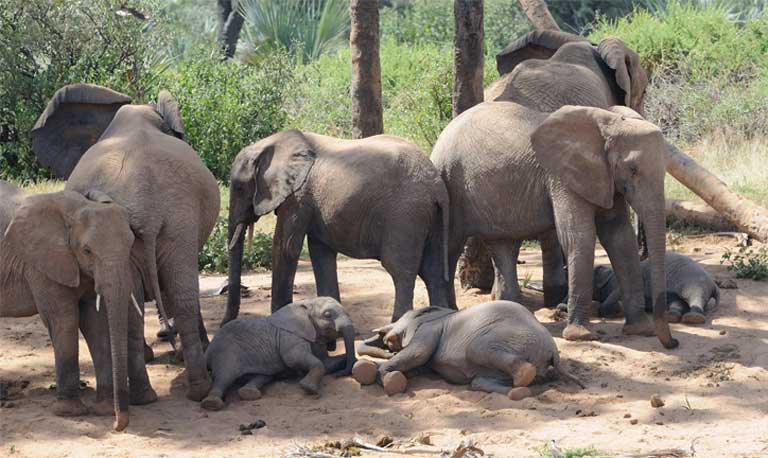
Who will shoot the last wild elephant?
Trophy hunters today live in a world where wildlife populations are collapsing due to human overpopulation, habitat loss and rampant poaching. While they may be right that trophy hunting can be a “tool” – if used wisely – to combat these trends, they are also increasingly shooting animals whose populations hang by a thread. Also notably, they use their rifles not to cull the weakest in the herd, as natural predators do, but to take out the strongest, most virile and vital individuals to serve as rugs or wall mounts.
Meanwhile, trophy hunters are becoming more desperate, as their sport steadily loses targets. You can’t legally shoot either tigers or jaguars anymore, nor Asian elephants or orangutans. The populations of the Big Five of Africa – elephants, lions, buffalo, rhinos and leopards, the totems of trophy hunting culture – look ready to collapse in the near-future as well, meaning permanent protection for what’s left, likely terminating once and for all (except, perhaps, in private game preserves) the mythos of the Great White Hunter.
When that day arrives, the question then becomes: will African nations have alternatives ready to make up for the lost revenue and for the land now held for hunting? Or will the doom predicted by trophy hunters come to pass on all the lands where they now legally hunt?
Currently, trophy hunters stalk over a million square kilometers (386,100 square miles) in Africa – though that area shrank recently after Botswana banned hunting to focus on its lucrative tourism industry – and in some cases hunting indeed is keeping this land wild.
“If hunting was stopped in all of these places immediately, the land would be claimed by agriculturalists or communities,” McCann said, adding “It is clear that although trophy hunting has no place in a modern and morally-minded world, it will take many years to find alternative sustainable uses for the land currently set aside for hunting that would be genuinely beneficial to biodiversity. As such, in conservation terms, hunting remains a necessary evil in some specific circumstances.”
But the writing may be on the wall. When even Donald Trump – a populist darling of the far right whose sons are avid trophy hunters – calls the sport a “horror show,” it demonstrates just how much trophy hunting is falling behind the times and out of favor.
FEEDBACK: Use this form to send a message to the author of this post. If you want to post a public comment, you can do that at the bottom of the page.
